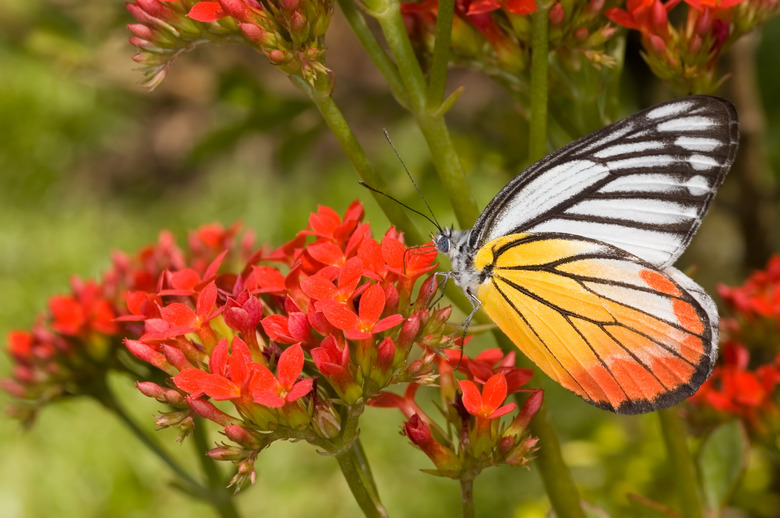What Is The Difference Between Calandiva And Kalanchoe?
We may receive a commission on purchases made from links.
Kalanchoe (Kalanchoe blossfeldiana, U.S. Department of Agriculture plant hardiness zones 10 through 12) is a perennial succulent and also goes by the name Christmas kalanchoe due to its habit of blooming around the holiday. Calandiva is a hybrid series of Kalanchoe blossfeldiana with the same habit of blooming and the same requirements for good growth. It's hardy in the same USDA zones as its parent. Both plants grow well when planted outdoors within their hardiness range and also as houseplants.
Tip
The major difference between Kalanchoe blossfeldiana and Calandiva is the number of petals contained on the flowers. Plants in the Calandiva series contain 32 petals, whereas kalanchoe contains four.
Kalanchoe blossfeldiana vs. Calandiva Series
Kalanchoe blossfeldiana vs. Calandiva Series
Discovered in 1926, Kalanchoe blossfeldiana is a Madagascar native and was introduced to Europe around 1930. The original plant had red flowers and has since been bred to produce flowers in other colors. Calandiva started life as a mutated plant that was found in 1998 and was then bred in the Netherlands by Fides Goldstock Breeding. Thus, the Calandiva series was born.
The bloom clusters on Kalanchoe blossfeldiana range in colors of red, pink and yellow, with each flower containing four petals. On the other hand, flowers in the Calandiva series resemble tiny roses, with the showy flower clusters containing 32 petals. Cultivars within the series contain flower colors of pink, red, bicolors of pink and white, white, orange and purple. The blooms on each type typically last for up to six weeks.
Both plants produce fleshy green succulent leaves that are scalloped on the edges. The clusters of blooms are held above the leaves by fleshy flower stalks. They produce multiple branches on upright plants that grow anywhere from 6 inches to 1.5 feet tall with a similar width.
Kalanchoe Preferred Growing Conditions
Kalanchoe Preferred Growing Conditions
When planted outdoors, both types of kalanchoe require a frost-free climate. However, those living in cooler climates can grow the plants in containers and bring them indoors to a warm, protected location during winter. Indoors, grow them in a location where temperatures are between 60 and 75 degrees Fahrenheit.
The plants grow best when planted on lightweight, sandy soils that drain well. If planting in pots, use a potting mix that isn't heavy and drains well. Make sure to grow kalanchoe in pots with bottom drain holes, as pots that do not drain promote problems with rot due to conditions being too soggy. They have a moderate tolerance to salty conditions, making them suitable choices for a seaside landscape.
For the best growth and production of flowers, plant on a site receiving full sun to partial sun. Kalanchoe that receive the most sunlight produce the most flowers. Situate indoor plants in a location that receives bright light.
Kalanchoe Continued Care
Kalanchoe Continued Care
Properly watering kalanchoe plants is an important part of their care and helps to prevent root rot. During the growing season, allow the soil to dry before watering again. If you're growing the plant in pots, you can test the soil by sticking your finger into it, and if the top couple of inches are dry, water until it runs out the bottom drain holes. In winter, cut back watering to every few weeks, as the plant is in a resting phase and not actively growing. Once warm temperatures in spring return, you can continue your regular watering schedule.
Fertilize them during the growing season and stop fertilizing in winter while the plants are resting. Use a water-soluble blend for blooming houseplants that has a higher middle number. This is the phosphorous content, which promotes blooming. Apply monthly at half strength during the growing season. Kalanchoe pruning needs are low. Snip off spent flowers or leggy growth using clean, sharp pruners.
